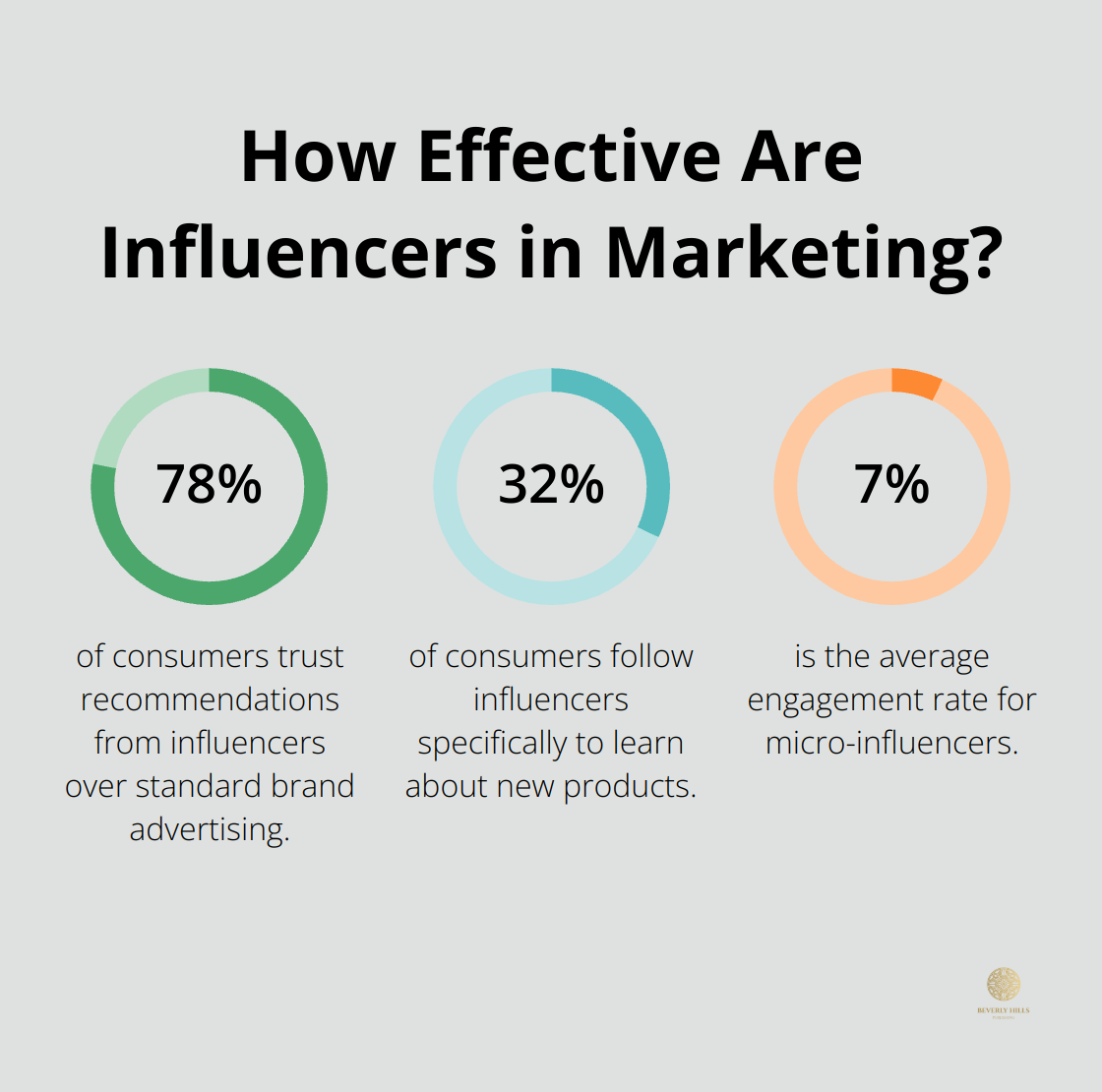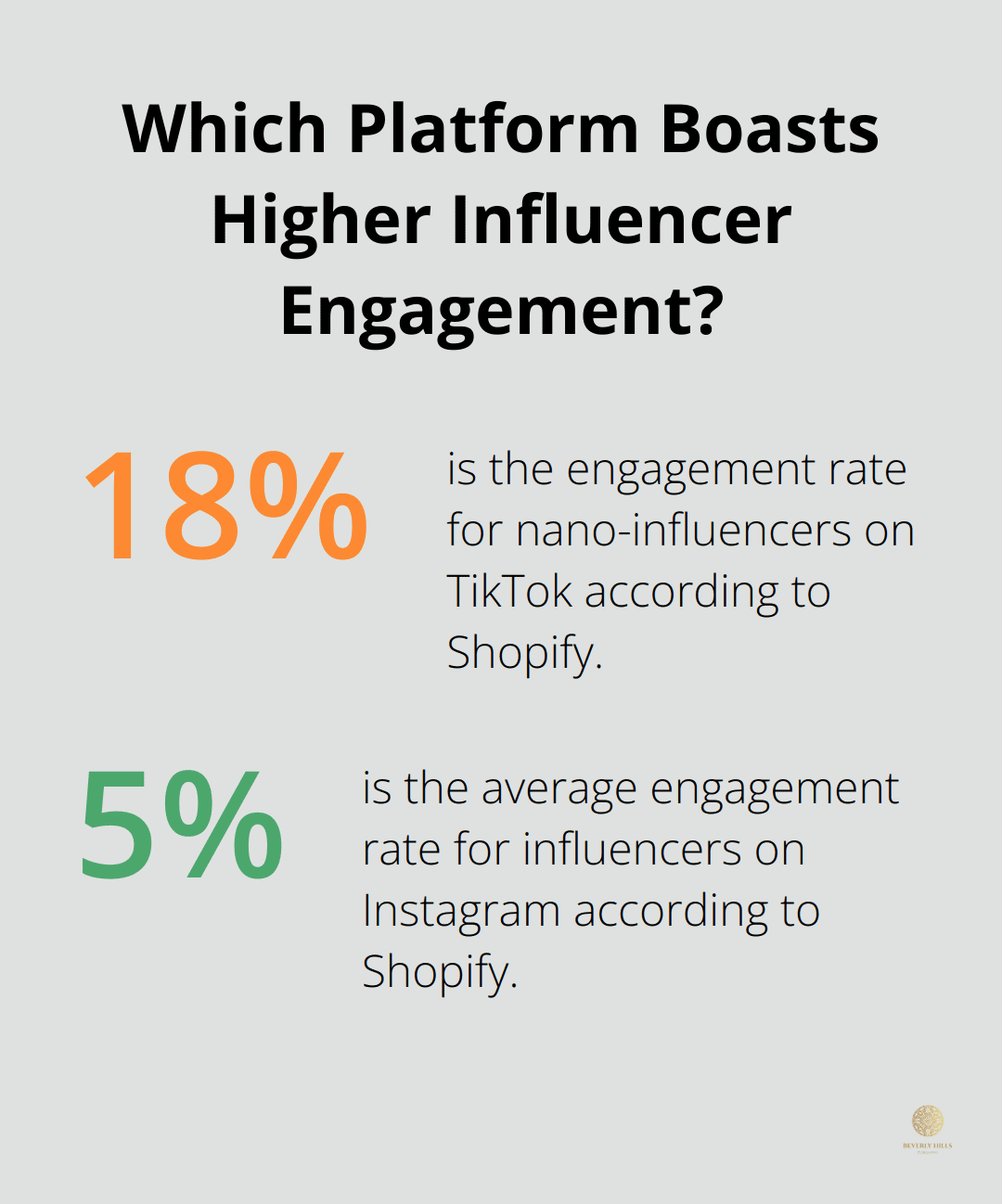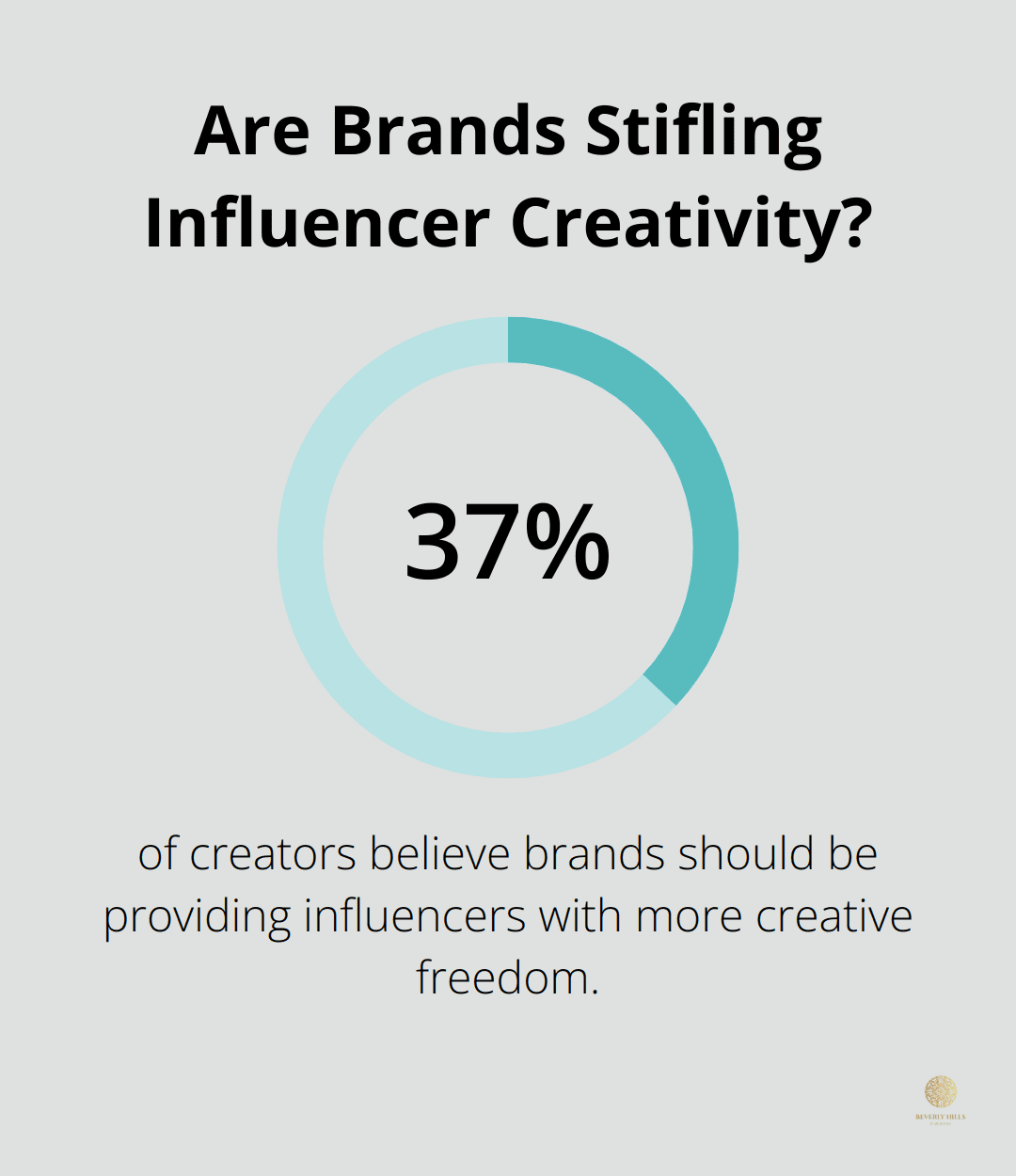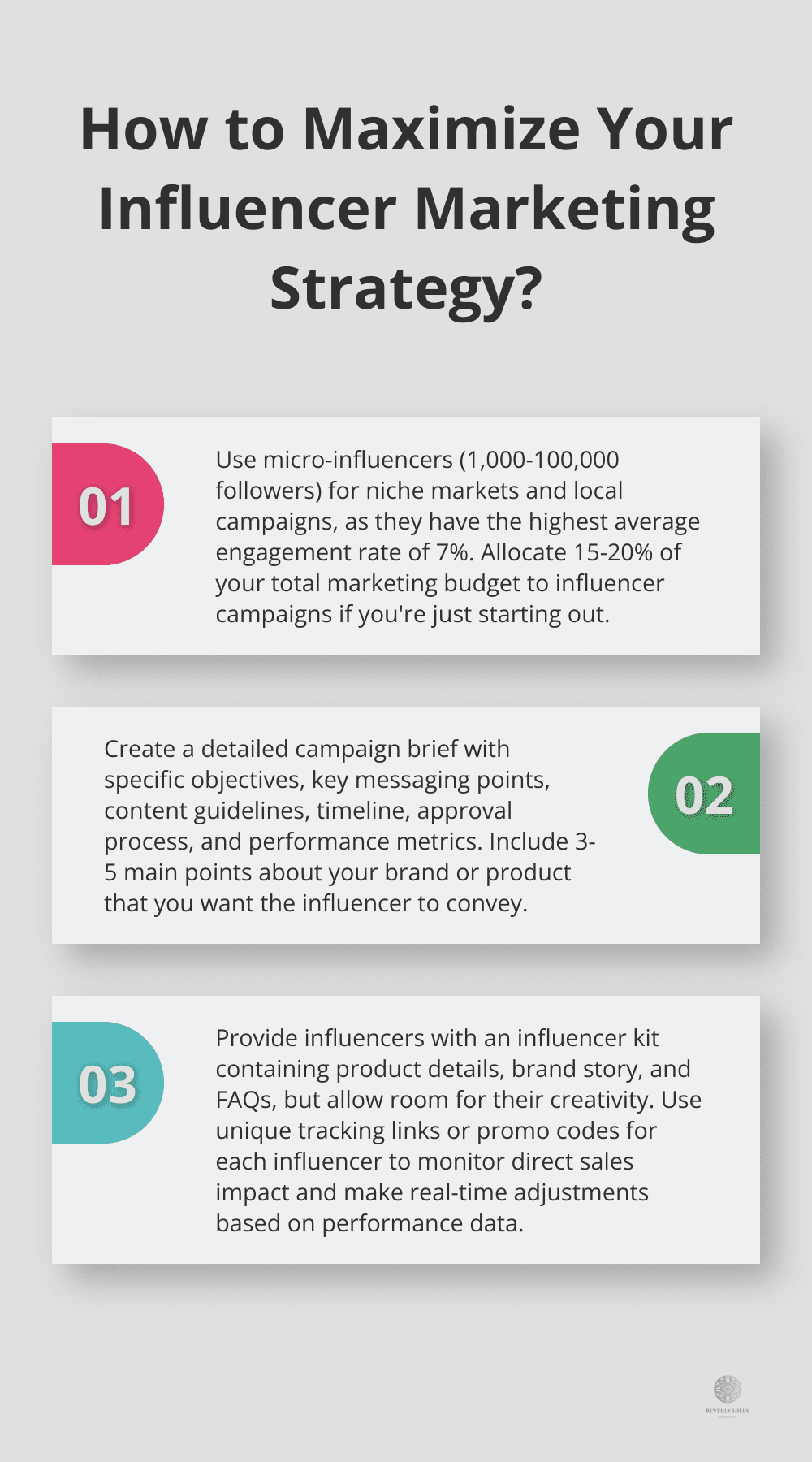At Beverly Hills Publishing, we’ve seen firsthand how influencer marketing can skyrocket a brand’s visibility and sales.
Booking influencer marketing campaigns has become a game-changer for businesses of all sizes.
In this post, we’ll guide you through the process of finding and collaborating with the right influencers for your brand, ensuring your campaigns deliver maximum impact.
What Is Influencer Marketing?
The Essence of Influencer Partnerships
Influencer marketing has transformed into a powerhouse strategy for brands seeking to expand their reach and connect with audiences authentically. This approach involves partnerships with individuals who possess significant and engaged followings on social media platforms. These influencers create content that promotes a brand’s products or services, using their credibility and audience relationships to drive awareness and sales.
The Impact of Influence
The significance of influencer marketing in today’s digital landscape cannot be overstated. What was a $1.7 billion industry in 2016 has since grown to become a $21.1 billion industry in 2023. This growth stems from the trust consumers place in influencers, with Edelman reporting that 61% of consumers trust influencers’ recommendations more than brand messaging alone.
Selecting the Optimal Influencer Tier
Understanding the different types of influencers is essential when planning your marketing strategy:
Micro-influencers (1,000-100,000 followers): These accounts often boast the highest engagement rates (averaging 7% compared to 1-3% for larger accounts). They excel in niche markets and local campaigns.

Macro-influencers (100,000-1 million followers): With broader reach, macro-influencers significantly boost brand awareness. They prove particularly effective for product launches and national campaigns.
Mega-influencers (1 million+ followers): Often celebrities or major public figures, mega-influencers offer massive exposure but come with a hefty price tag and potentially lower engagement rates.
Concrete Benefits for Your Brand
Influencer marketing offers several tangible advantages:
Impressive ROI: According to HypeAuditor’s report, brands can expect an average return of $4.21 for every $1 spent on Instagram influencer campaigns.
Enhanced Credibility: A staggering 78% of consumers trust recommendations from influencers over standard brand advertising, making this a powerful tool for building trust.
Precision Targeting: Partnering with influencers in your niche allows you to reach highly specific audiences. Twitter reports that 32% of consumers follow influencers specifically to learn about new products.
Content Generation: Influencers create high-quality, authentic content that brands can repurpose across marketing channels. Aspire notes that 21% of marketers repurpose influencer-generated content on their websites to enhance product pages.
The Next Step: Identifying the Right Influencers
Now that we understand the power and benefits of influencer marketing, the next critical step is to identify the right influencers for your brand. This process involves careful consideration of your target audience, campaign goals, and the influencers’ alignment with your brand values. In the next section, we’ll explore effective strategies to find and evaluate potential influencers who can best represent your brand and connect with your desired audience.
Finding Your Perfect Influencer Match
Know Your Audience Inside Out
Before you start your influencer search, you need a clear picture of your target audience. Analyze your customer data. What are their demographics, interests, and online behaviors? Use tools like Google Analytics or social media insights to gather this information. For example, if you target young professionals interested in personal finance, you’ll want to look for influencers who create content about budgeting, investing, and career growth. Understanding your audience is crucial for effective influencer marketing.
Set Clear Campaign Objectives
Your campaign goals will guide your influencer selection. Do you aim to increase brand awareness, drive sales, or boost engagement? Each objective requires a different approach. If your goal is to drive sales, you might focus on influencers with high conversion rates rather than just large follower counts.
Research Your Niche
Once you know your audience and goals, it’s time to find influencers who align with your brand. Start by searching relevant hashtags on social media platforms. Tools like Hashtagify can help you discover trending hashtags in your industry. Look for influencers who consistently use these hashtags and create content that resonates with your target audience.
Prioritize Engagement Over Followers
Don’t be fooled by large follower counts. Engagement rate is a much more reliable indicator of an influencer’s impact. According to Shopify, nano-influencers on TikTok have an incredible 18% engagement rate, trumping Instagram’s 5% average and 3.5% for YouTube influencers. Use tools like HypeAuditor or Social Blade to analyze an influencer’s engagement metrics.
Verify Authenticity
In the age of fake followers and bought engagement, authenticity is essential. Look for influencers who have genuine interactions with their followers. Read through their comments and see how they respond. Do they have a consistent voice and style? Are their followers asking meaningful questions or just leaving generic comments?
Use Influencer Marketing Platforms
Influencer marketing platforms can streamline your influencer search process. These tools allow you to filter influencers based on various criteria such as niche, audience demographics, and engagement rates. They also often provide detailed analytics and campaign management features.
Ensure Brand Alignment
An influencer might meet all criteria in terms of audience and engagement, but if their values don’t align with your brand, the partnership won’t work. Review their past content and collaborations. Do they promote products or ideas that contradict your brand values? Have they been involved in any controversies that could reflect poorly on your brand?
Build Relationships
Once you’ve identified potential influencers, it’s time to reach out. But don’t just send a generic pitch. Personalize your approach. Comment on their content, engage with their posts, and show genuine interest in their work before proposing a collaboration. This approach helps build a foundation for a more authentic partnership.

Finding the right influencer is not just about numbers (it’s about finding someone who can authentically represent your brand and connect with your target audience). Take your time with this process – a well-chosen influencer can make all the difference in your campaign’s success.
Now that you’ve identified potential influencers for your brand, the next step is to create an effective influencer marketing campaign. This involves setting budgets, developing clear guidelines, and collaborating on content creation. Let’s explore how to make your influencer partnerships truly shine.
How to Create a Winning Influencer Campaign
Set a Smart Budget
Your budget determines the scope of your campaign and the type of influencers you can work with. Nano-influencers might charge $10-$100 per post, while mega-influencers can command $10,000 or more. Don’t just focus on follower count. Micro-influencers often deliver a higher ROI compared to macro-influencers, due to their lower costs and higher engagement rates.

Consider the platform you’re targeting. Instagram tends to be more expensive, with an average cost of $1,000 per 100,000 followers. TikTok often offers better value, especially with its rising popularity among younger audiences.
Factor in additional costs like product samples, shipping, or potential travel expenses for influencer events. Allocate 15-20% of your total marketing budget to influencer campaigns if you’re just starting out.
Craft a Clear Campaign Brief
A well-defined brief aligns expectations and ensures campaign success. Your brief should include:
Campaign objectives: Be specific. Try “increase Instagram followers by 20% within three months” instead of just “increase brand awareness.”
Key messaging points: Provide 3-5 main points about your brand or product that you want the influencer to convey.
Content guidelines: Specify the type of content you want (e.g., Instagram Reels, TikTok videos, blog posts) and any must-have elements like specific hashtags or product placement instructions.
Timeline: Outline important dates, including content submission deadlines and posting schedules.
Approval process: Explain how and when you’ll review content before it goes live.
Performance metrics: Define how you’ll measure success, whether it’s engagement rate, click-throughs, or sales.
Foster Collaborative Content Creation
While it’s important to provide guidelines, allow room for the influencer’s creativity. Their audience follows them for their unique voice and style, so trust their expertise in creating content that resonates.
Start with a kickoff call to discuss your brand and campaign goals. This personal touch can significantly boost the influencer’s enthusiasm and understanding of your product.
Provide influencers with comprehensive information about your product or service. The more they know, the more authentic and engaging their content will be. Consider creating an influencer kit with product details, brand story, and FAQs.
Encourage influencers to share their ideas. They know their audience best, and their input can lead to more effective, authentic content. (37% of creators believe brands should be providing influencers with more creative freedom.)
Track and Optimize Performance
Measuring your campaign’s performance optimizes future efforts. Use unique tracking links or promo codes for each influencer to monitor direct sales impact. Tools like Google Analytics help you track website traffic and user behavior resulting from influencer posts.
Monitor engagement metrics like likes, comments, and shares. Analyze the sentiment of comments to gauge audience reception. Are followers asking questions about your product? Are they expressing interest in purchasing?
Compare the performance of different influencers and content types. This data will inform your strategy for future campaigns. (You might find that video content outperforms static posts, or that micro-influencers drive more conversions than macro-influencers for your brand.)
Don’t wait until the end of the campaign to assess performance. Regular check-ins allow you to make real-time adjustments. If certain content performs exceptionally well, consider boosting it or creating similar content with other influencers.
Final Thoughts
Booking influencer marketing for your brand requires a strategic approach to yield impressive results. The process involves understanding influencer partnerships, identifying the perfect match, and creating winning campaigns. Authenticity and alignment stand out as key factors in successful collaborations. (We expect future developments in influencer marketing to include more immersive content formats and increased use of data analytics for campaign optimization.)

Brands must adapt to evolving platforms and new technologies while maintaining focus on authentic connections and measurable results. The strategies outlined in this guide will equip you to harness the power of influencer marketing effectively. You will navigate the changing landscape of digital marketing and achieve success for your brand.
At Beverly Hills Publishing, we help authors and brands establish themselves as industry leaders. Our integrated approach combines innovative publishing solutions with strategic branding and marketing. We empower our clients to create a commanding media presence in their respective fields.















































































































































































































































